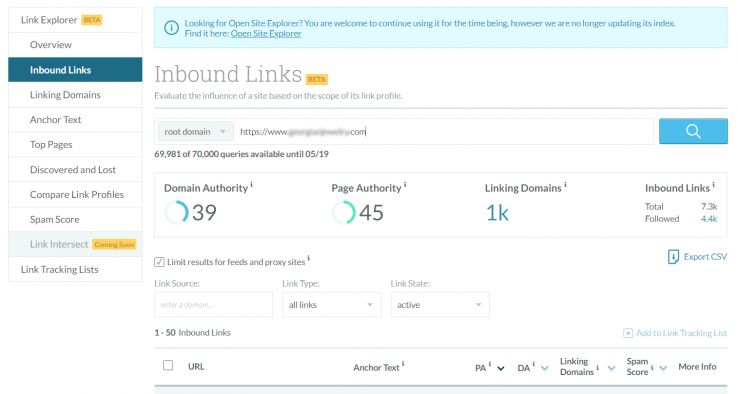News Courtesy of Moz.com:
Identifying bad backlinks has become easier over the past few years with better tool sets, bigger link indexes, and increased knowledge, but for many in our industry it's still crudely implemented. While the ideal scenario would be to have a professional poring over your link profile and combing each link one-by-one for concerns, for many webmasters that's just too expensive (and, frankly, overkill).
I'm going to walk through a simple methodology using Link Explorer and Excel (although you could do this with Google Sheets just as easily) to combine together the power of Moz Link Explorer, Keyword Explorer Lists, and finally Link Lists to do a comprehensive link audit.
The basics
There are several components involved in determining whether a link is "bad" and should potentially be removed. Ultimately, we want to be able to measure the riskiness of the link (how likely is Google to flag the link as manipulative and how much do we depend on the link for value). Let me address three common factors used by SEOs to determine this score:
As a leader in SEO metrics, MOZ offers proven advice and trusted metrics when it comes to profiling backlinks. A lot of SEO agencies will apply the “go big or go home” methodology of link building. The object being, get as many backlinks as fast as possible. Yes, it can work, but there is a much more effective way.
If you look at your backlinks in Google Webmaster Tools, you’ll most likely see multiple links from the same domain. Especially, directory backlinks. I show hundreds of links for this site on yellowpages.com. For SEO purposes, you should only concern yourself with one backlink per domain. You can use SE Ranking to show only unique domain backlinks. Of course, YellowPages links are nofollow so they probably have little impact if any at all.
Using MOZ’s Link Explorer tool you can view spam scores for backlinks discovered. You’ll need to determine the threshold percentage for this score on your own. For instance, I personally would disavow any link with a score higher than 30%. Maybe you want to risk it and go to 40-50%. Or play it conservatively and only stick with 1% links.
If you really want to do your due diligence with your link profile, you should export them to a spreadsheet. Lookup the domain authority/page authority of a link. Add columns to your spreadsheet for these metrics and enter their values next to the corresponding domain. Aside from MOZ, I like to add columns for AHREFS domain rating and also Majestic’s Citation Flow and Trust Flow. Majestic even has a free Chrome extension to allow you to see TF/CF of the URL your browser is on.
Anyways, I highly encourage everyone to read the source article for this post. The in-depth tutorial for monitoring bad links is top-notch!



